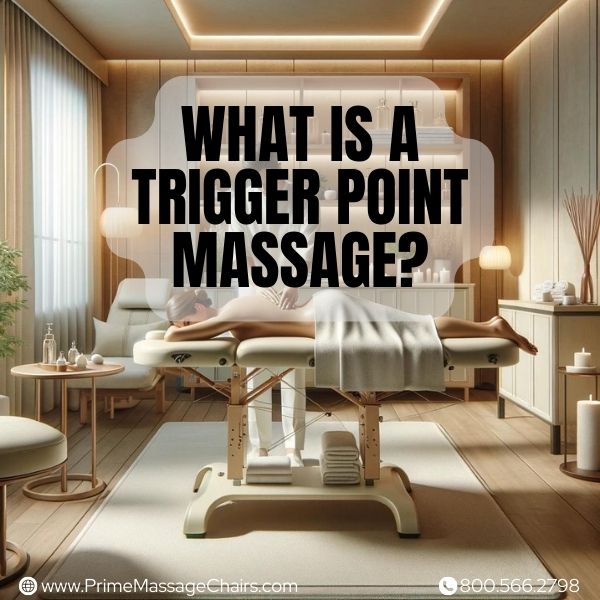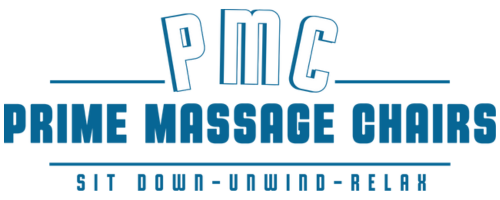
What Is A Trigger Point Massage
What is a trigger point massage? Well, have you ever felt knots or tight spots in your muscles that cause nagging pain?
Trigger point massage offers relief by applying targeted pressure to release these stubborn knots.
However, research shows that the effectiveness of trigger point massage can vary, with some studies indicating benefits while others show limited effects. The effectiveness can depend on factors such as the specific techniques used, the condition being treated, and individual patient characteristics.
The understanding of trigger points, especially their exact mechanism and the theory of referred pain, is still a subject of ongoing research and debate within the medical community.
This blog post will guide you through this essential therapy – explaining what trigger points are, how the massage works, and its incredible benefits.
Understanding Trigger Points
Trigger points refer to knots or tight bands within muscle fibers. These hypersensitive areas develop due to overuse, injury, or poor posture.
They can restrict motion and cause referred pain in other body regions.
Myofascial trigger points involve the fascia—the connective tissue surrounding muscles.

While applying pressure is a common treatment believed by some to release these hypothetical trigger points, leading to improved circulation and flexibility, it's important to note that scientific evidence on the effectiveness and mechanisms of this treatment is mixed and ongoing research is necessary.
Massage therapy targets and releases trigger points, restoring musculoskeletal function.
Definition and Causes
Trigger points are small, hypersensitive knots or tight bands in muscle fibers. They develop from overuse, injury, or prolonged muscle tension.
The hypothesis that restricted blood flow and oxygen deprivation contribute to the formation of trigger points is one of several theories, with varying levels of scientific evidence supporting it.
The complexity of muscle pain mechanisms suggests multifactorial causes, indicating that more comprehensive research is needed.
Common causes include poor posture, repetitive motions, stress, dehydration, and vitamin deficiencies.
These factors overwhelm muscles, causing them to contract involuntarily and form trigger points.
Physical trauma like whiplash or falls can also directly injure muscles, leading to trigger point development.
Untreated, trigger points may lead to discomfort and can contribute to changes in muscle function, potentially causing pain in areas distant from the trigger point itself.
However, the nature and extent of these effects can vary widely among individuals.
The Science Behind Trigger Point Massage
Trigger point massage is a hands-on technique. A therapist applies firm pressure to tense muscles.

There are theories suggesting that pressure on trigger points may facilitate the release of accumulated metabolic waste products in muscles, potentially improving oxygen and nutrient flow.
However, these theories lack substantial scientific evidence, and the physiological basis of trigger points and their treatment remains under investigation.
While the concept of trigger point therapy is supported by anecdotal evidence and practitioner experience, it's worth noting that scientific consensus on its effectiveness and underlying mechanisms is still evolving. Interested readers are encouraged to consult current research and expert opinions.
Now let's talk about how it works.
How It Works
Trigger point massage employs specialized techniques targeting knots or tense bands in muscles, known as trigger points.
These localized areas restrict blood flow, causing pain and stiffness.
During the therapy, a skilled massage therapist applies precise pressure directly onto the trigger point.
This focused pressure helps disrupt the dysfunctional cycle, restoring normal muscle function and circulation.
The process involves slow, deep strokes applying sustained pressure to release the trigger point's tension.
The process aims to relax muscle fibers, theoretically allowing for the dissipation of waste products and improved flow of oxygen and nutrients, though the precise physiological changes are part of ongoing research.
Differences Between Trigger Point and Other Massage Therapies
Understanding the unique qualities of trigger point massage therapy compared to other forms of bodywork is key for anyone looking to find relief from chronic pain.
Here's a straightforward comparison that lays out the main differences:
| Aspect | Trigger Point Massage | Other Massage Therapies |
|---|---|---|
| Focus | Direct pressure on specific trigger points | General relaxation and muscle tension relief |
| Technique | Involves techniques like myofascial release and deep tissue massage | May use a variety of techniques, including Swedish massage and gentle stroking |
| Goal | Deactivate trigger points to reduce pain | Improve overall wellness, reduce stress |
| Benefit | Can help with chronic pain and improve range of motion | Focuses on relaxation, may not address specific pain points |
| Duration and Frequency | Sessions may be longer due to the focus on specific areas. Frequency depends on the individual's condition. | Duration and frequency can vary widely based on personal preference and goals. |
This comparison makes it clear - trigger point massage therapy stands out for its focused approach on specific areas causing pain.
It's not just about making you feel good in the moment but about initiating long-term relief and recovery.
If your goal is to target pain that seems stubborn and precise, this type of massage might just be what you're looking for.
Remember, massage therapy, especially of the trigger point variety, is not invasive and tackles the areas of pain that might be overlooked by other treatments.
Potential Benefits of Trigger Point Massage Therapy
Easing muscle tension and promoting better range of motion are key potential benefits of trigger point massage therapy.
This specialized technique targets knots and tightness, delivering relief from pain and stiffness.
To explore these advantages in-depth, let's continue reading.
Pain Relief
Trigger point massage potentially delivers pain relief. It targets specific knots or taut bands in muscles.
Applying direct pressure relaxes these trigger points. This eases muscle tension and restores range of motion.
Many experience instant reduction in chronic pain after treatment.
Trigger point therapy aims to address pain by focusing on areas identified as tightened muscle fibers, though it's important to note that the perception of pain sources and the effectiveness of this therapy can vary among individuals.
Sustained pressure on a trigger point helps release built-up metabolic waste. This reduces inflammation and relieves referred pain in other areas.
Improved Range of Motion
Trigger point massage delivers remarkable benefits in improving range of motion.
By applying targeted pressure to knots and tense areas within muscle fibers, this therapy helps relax rigid tissue.
As these trigger points release, muscles regain their full extensibility – allowing freer, less restricted movement.
This increased flexibility proves invaluable for athletes, dancers, and anyone seeking greater mobility.
Deep tissue work and myofascial release techniques complement trigger point therapy.
FAQs
What are trigger points and what causes them?
Trigger points are painful, isolated knots that form in muscle tissue. They can be caused by injury, overuse, or even stress and poor posture. These knotted areas restrict blood flow and irritate surrounding nerves, leading to referred pain in other parts of the body.
How does trigger point massage help relieve pain?
A trigger point massage applies direct pressure to release these knots and relax the muscle fibers. As the pressure is sustained and then released, it improves blood flow and oxygen to the area -- helping to "unlock" the trigger point and alleviate associated pain and discomfort.
What are the different types of trigger points?
There are two main types: active and latent. Active trigger points cause constant pain, while latent ones may be painless until pressed on. Some trigger points are primary -- the main source of pain. Others are satellite points that develop in muscles used to compensate for the primary point.
Can trigger points occur anywhere in the body?
Yes, trigger points can form anywhere there are muscles in the body. Common areas include the back, shoulders, and neck -- but they may also develop in the legs, arms, or even the jaw. A physical therapist or massage therapist can help locate and treat them.
Who can perform trigger point therapy?
While some self-massage techniques exist, it's best to see a licensed massage therapist trained in trigger point therapy. They know how to properly identify points, apply the right pressure, and use other techniques like stretching to fully release knots.
How can I prevent trigger points from forming?
Maintaining good posture, staying hydrated, getting enough rest, and doing regular stretching/massage can all help prevent trigger points. If you do develop them, don't ignore the pain -- seek treatment early before satellite points form and the issue worsens.
Conclusion
Trigger point massage represents a therapeutic approach with the potential to alleviate pain and improve mobility for many, though individual experiences and outcomes may vary.
Consultation with a healthcare professional is recommended to determine its suitability for your specific condition.
Trigger point therapy targets those pesky knots – applying precise pressure releases tension, enhances blood flow, and promotes healing.
Whether you're an athlete pushing boundaries or someone dealing with chronic discomfort, consider exploring this invaluable treatment.
You'll want to consult certified professionals who can guide you through the process, ensuring safe and effective results.
We hope you've enjoyed this article and feel more informed about trigger point massage. Thank you for reading!
Disclaimer:
We do not provide medical advice. The content of this article, including text, graphics, and other material, is for informational purposes only. It is not intended to be a substitute for professional medical advice, diagnosis, or treatment. Always seek the advice of your physician or other qualified health provider with any questions you may have regarding a health condition. Never disregard professional medical advice or delay in seeking it because of something you have read in this article or on our website.
